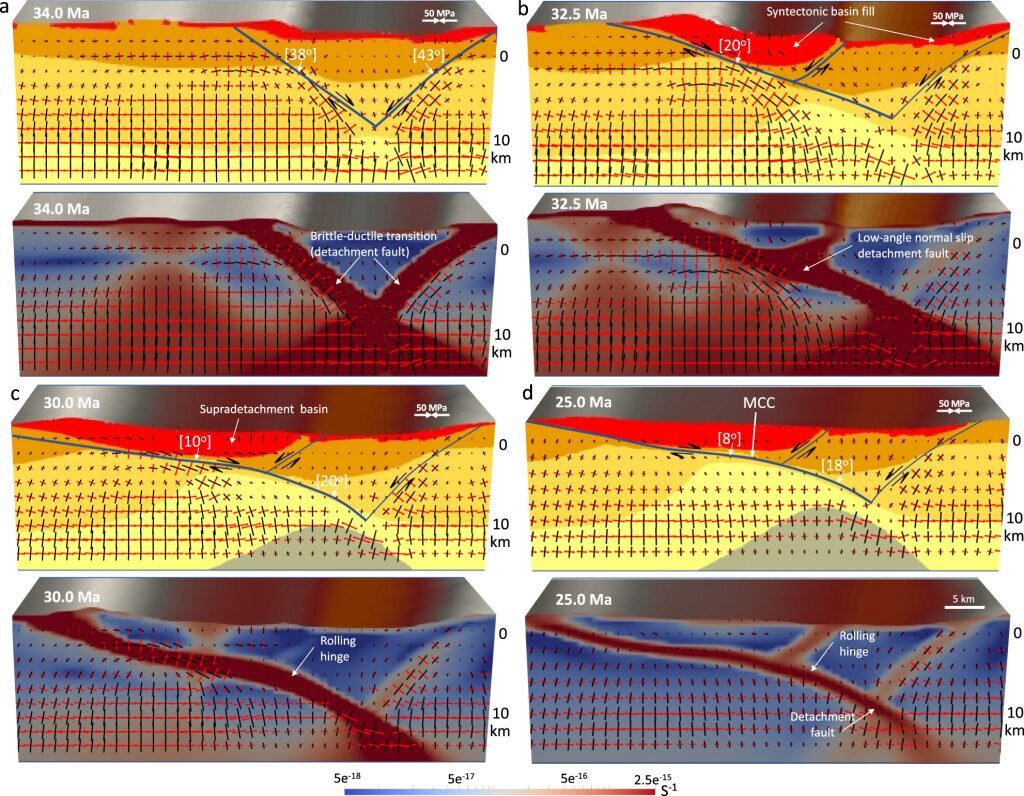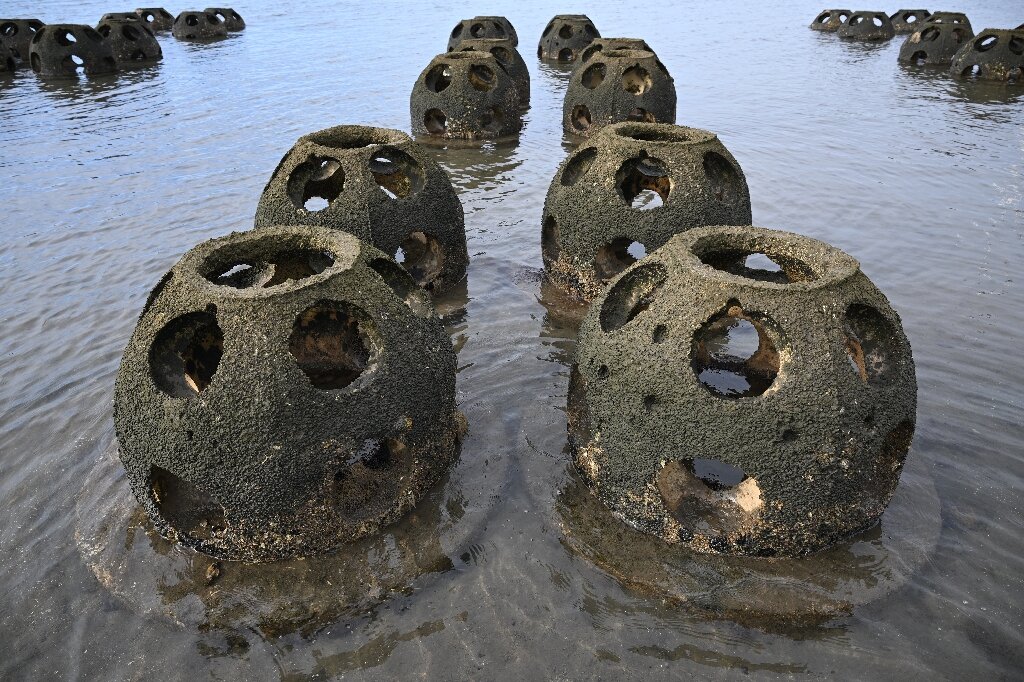These simulation visuals illustrate the development of a metamorphic core complex, showing crustal stress and strain rates, faulting, uplift of deeper rocks, and deposition by surface erosion. These core complex development processes occur after the thickened crustal root that supports the topography is weakened by the introduction of heat, fluid, and partial melt. By Alireza Bahadori and William E. Holt
Stony Brook University is leading a research project that focuses on interactions between landscape evolution, climate, and the fossil record of mammal evolution and diversification in the western United States. A little-studied aspect of this geoscientific research is the relationship between deep-Earth gravitational forces and landscape evolution.
Now in a recently published article in Communications of natureUsing computer simulations, researchers show that deep roots beneath the mountain belts (analogous to the massive ice beneath the tip of an iceberg) cause dramatic movements along faults that cause the mountain belt to collapse and expose rocks that were once about 15 miles below the surface.
The origin of these mysterious exposures, called “metamorphic nuclear complexes”, is hotly debated in the scientific community. This research could change the way scientists try to unravel the history of Earth as an evolving planet.
Lead principal investigator William E. Holt, Ph.D., professor of geophysics in the Department of Earth Sciences, Stony Brook University School of Arts and Sciences, first author Alireza Bahadori, former Ph.D. student at Holt, now at Columbia University, and his colleagues found that these major complexes are fossils of the mountain belts of the past in the western United States that occupied the regions around Phoenix and Las Vegas. These mountainous areas left traces in the form of gravel deposits from ancient north- and east-flowing rivers found today south and west of Flagstaff, Arizona.
The work outlined in the paper highlights the development of what the research team calls a general model for the formation of the metamorphic core complex and the demonstration that they are the result of the collapse of a mountain belt supported by a thickened crustal root.
The authors go on to explain: “We show that the body’s gravitational forces, generated by topography and the crustal root, cause an upward flow pattern in the ductile lower and middle crust, which is facilitated by a detachment surface that transforms into a low-angle normal fault. This detachment surface acquires a large amount of confined deformation, corresponding to the thick mylonite zones found in the metamorphic core assemblages.’
The work is based on research also published in Communications of nature in 2022, Holt and colleagues published a first-of-its-kind 3D model to illustrate the relationship between climate and tectonics to simulate the landscape and erosional/depositional history of the region before, during, and after the formation of these metamorphic core complexes.
These simulations were linked to a global climate model that predicted precipitation trends in the southwestern United States over time. 3D model accurately predicts sediment deposition in mammal fossil-bearing basins and climate record.
The group also published paper art Achievements of science in November 2021 under the direction of team member Kathy Loughney.
This study showed that the main peak of mammalian diversification can be statistically related to the peak of the extensional collapse of ancient mountain belts. The collaborative study is thus the first of its kind to quantify how deep Earth forces combine with climate to affect the landscape and influence the diversification of mammals and the distribution of species found in fossils.
Alireza Bahadori and others. The role of gravitational forces in the development of metamorphic core complexes, Communications of nature (2022). DOI: 10.1038/s41467-022-33361-2
Provided
Stony Brook University
Citation: Study Shows Gravitational Forces in Deep Earth Have Large Influence on Landscape Evolution (2022, October 6) Retrieved October 6, 2022, from https://phys.org/news/2022-10-gravitational-deep-earth -great-impact.html
This document is subject to copyright. Except in good faith for the purpose of private study or research, no part may be reproduced without written permission. The content is provided for informational purposes only.






